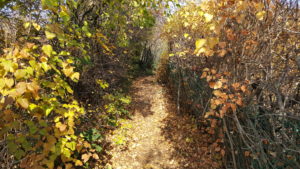General description of project area
Name of the project area: Budai Sas-hegy
Surface area (ha): 14.630
EU protection status SPA: –
EU protection status SCI: NATURA 2000 Code HUDI20009
Other protection status according to national or regional legislation: National Park, Nationally Protected Area
The main uses of the project site: The main land uses: Nature conservation 100%
The ownership status: Sate property 100%

Scientific description of project area
Sas-hegy mountain looks like a bare, rocky “island” surrounded by settlement areas in Budapest. The area is in fact the habitat of several unique species, the refuge of the ancient flora and fauna of Budapest. It is a true biodiversity hotspot regarding vascular plants, spiders, reptiles and other groups as well.
Sas-hegy can be divided into two considerably different parts based on natural and seminatural habitats. Areas with dolomite bedrock at higher elevations are covered mostly by rocky grasslands (6190 * Rupicolous pannonic grasslands (Stipo-Festucetalia pallentis), 6240 * Sub-Pannonic steppic grasslands). Southern foothills with bedrock of marl clay and loess are inhabited by shrubs (Crataegus monogyna, Prunus spinosa etc.) and trees (Fraxinus ornus, Quercus pubescens etc.). The potential vegetation in this area is the SAC Natura 2000 marker habitat: 91H0 * Pannonian woods with Quercus pubescens. Landscape history of the two parts are also different, since the areas near the peak with exposed dolomite rocks were never suitable for agricultural activity, however southern slopes were used for vineyards and orchards for several hundred years. Consequently, conditions near the peaks are more natural, however spreading of alien plants poses as danger for the natural dolomite vegetation and fauna. The characteristic habitat is a mosaic of grasses and bush-forests which is rich in endemic and relict species. Most invasive shrub species is the Syringa vulgaris. On southern slopes of foothills after abandonment, spontaneous succession processes took place that resulted in forming shrub (and later tree) containing associations, however spreading of alien species must be considered, too. Here, populations of some unique orchid species such as Ophrys apifera, Anacamptis pyramidalis, Orchis purpurea and Cephalanthera damasonium can be found. In connection with grasslands the Natura 2000 marker species like Dianthus plumarius regis-stephani, Pulsatilla grandis and Seseli leucospermum have significant stands in the area, while in the reforesting area the Lucanus cervus, a Natura 2000 marker species can be found.
Importance of the project area for biodiversity and/or for the conservation of the species /habitat types targeted at regional, national and EU level
The area is the habitat of several unique species, the refuge of the ancient flora and fauna of Budapest. It is a true biodiversity hotspot regarding vascular plants, spiders, reptiles and other groups as well. The potential vegetation in this area is the SAC Natura 2000 marker habitat: 91H0 * Pannonian woods with Quercus pubescens which should be restored.
Improving and maintaining the quality of the referred Natura 2000 marker habitats is important even on an EU level.
Flagship species in project area
Quercus pubescens, Orchis purpurea, Homo sapiens